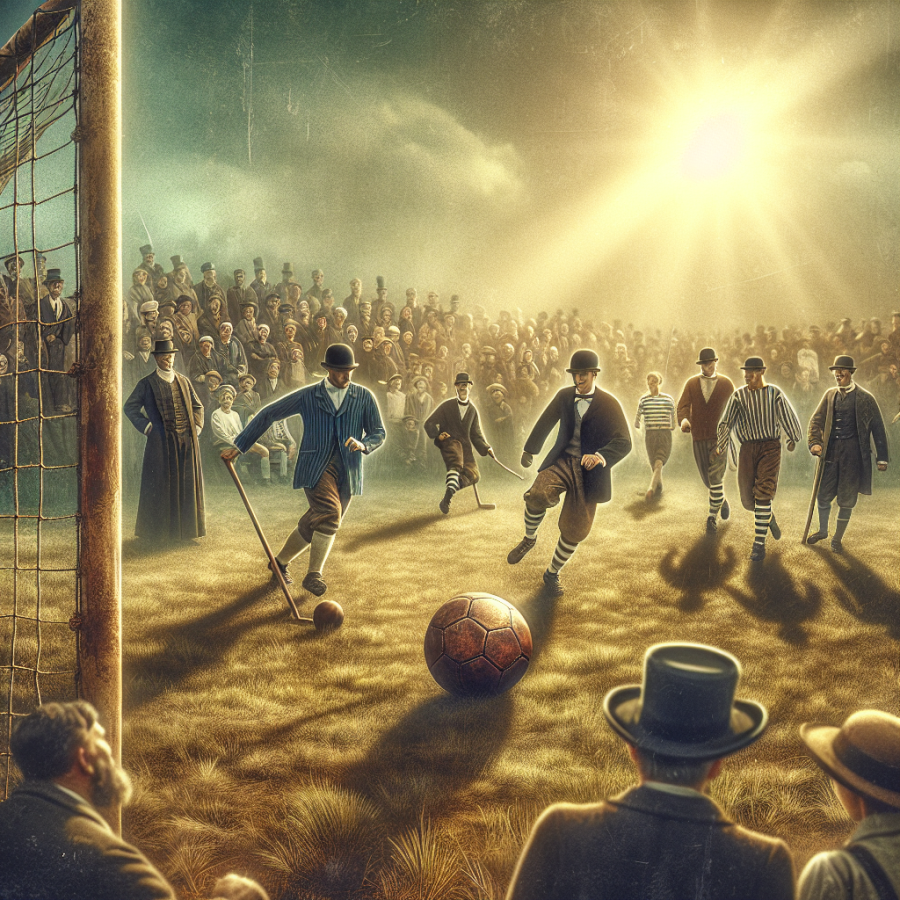Unraveling the Ancient Roots of Soccer: From China's Cuju to Britain's Mob Football
In China's ancient history, a game similar to modern-day soccer was already being played, which was known as "Cuju." The term "Cuju" translates directly to "kick ball". This game originated during the Han Dynasty (206 BC-220 AD) and has been well-documented in historical texts. Players in a Cuju match were required to kick a leather ball stuffed with feathers into a net, and just like modern soccer, they were not allowed to use their hands. The game was originally designed as a way for soldiers to stay in shape, but Cuju quickly became a popular sport amongst the Chinese nobility as well. It must also be noted that the Tang Dynasty (618-907) was recognized as the golden age of Cuju as it was during this period that the game was standardized and professional players emerged.
Another region where a form of soccer can be traced back to is ancient Greece. A game called Episkyros, which entailed kicking a ball and running towards a designated area, was often played. The ball used in the game was sometimes made of linen strips stuffed with hair. However, unlike modern soccer, there was not a strong emphasis on not using the hands. In fact, most artwork depicting the game shows players handling the ball.
Moving on to ancient Rome, a game called Harpastum was popular, and it drew many similarities with the Greek game Episkyros. Harpastum was a very physically demanding game with a focus on strength and agility. The ball used was significantly smaller than what is used in modern soccer, and could be carried in one hand. Though it was not entirely analogous to today's soccer, it does provide some insight into the evolution of the game as it moved from Asia into Europe.
Interestingly, the evolution of soccer is strongly tied with Britain, especially through the evolution of the British game known as Mob football. Characteristically similar to soccer, Mob football was played between neighboring towns and villages with goals set at specific landmarks. The main rule was that players could not murder their opponents; practically everything else, including using any means necessary to get the ball to the opposing team's land, was fair game. These games were played on holidays and were a popular spectacle for spectators. Despite being banned multiple times (possibly due to its violent nature), the love for the game made it resilient and it ultimately evolved into what we now know as football, or in North America, soccer.
Read also:
Discover Your Inner Athlete: Which Soccer Player Are You?"
Evolution of Modern Soccer: Formation of the British Football Association and Spread Across the Globe
The formation of the British Football Association (FA) emerged as early as 1863, marking an essential milestone in the evolution of modern soccer. Where public schools in England had already developed their versions of football, standardized rules were greatly needed to eliminate confusion and disagreements. These differing rules were the main impetus for the formation of the FA. Club representatives met at the Freemasons' Tavern on Great Queen Street in London, intending to form a governing body that could establish universally accepted football rules. From these meetings, the FA, recognized as the world's first official football governing body, was born. Today, it continues its mission of regulating football in England, trophy competitions, and the national teams alike.
The original set of thirteen rules known as the "London Rules" was established by the FA. They included guidelines on throws, goal kicks, and offside rules, which are all familiar aspects of football today. These rules marked the first complete codification of football, thus shaping its early evolution. However, these rules were met with some resistance as they essentially outlawed the use of hands, hence creating a divide between the two main forms of football - Rugby and Association Football. This led to the split in 1869, where Rugby football established its own rules distinct from that of Association Football.
The main achievement of the FA was to standardize football, navigating it away from its chaotic public school roots, filled with varying rules and often violent play, to a sport that was standardized and more organized. It became a sport that could be enjoyed by many across the nation and could be easily organized without confusion or disagreement.
Soccer would not have gained such immense popularity had it not spread beyond the geographical boundaries of the United Kingdom. As British expatriates moved across the world in the late 19th century, so did the sport of football. With them, they took the standardized rules of football, setting the foundation for football associations in various countries across the globe. British sailors, diplomats, and traders introduced the game to Continental Europe, South America, and Asia.
Notably, in 1893, football was introduced in Argentina, leading to the establishment of the Argentine Football Association. Similarly, in 1895, football moved to Chile, and by 1895 the Chilean Football Federation was formed. These early expansions outside of Europe were key to the game's worldwide popularity.
Football's global spread continued during the late 19th and early 20th century.




